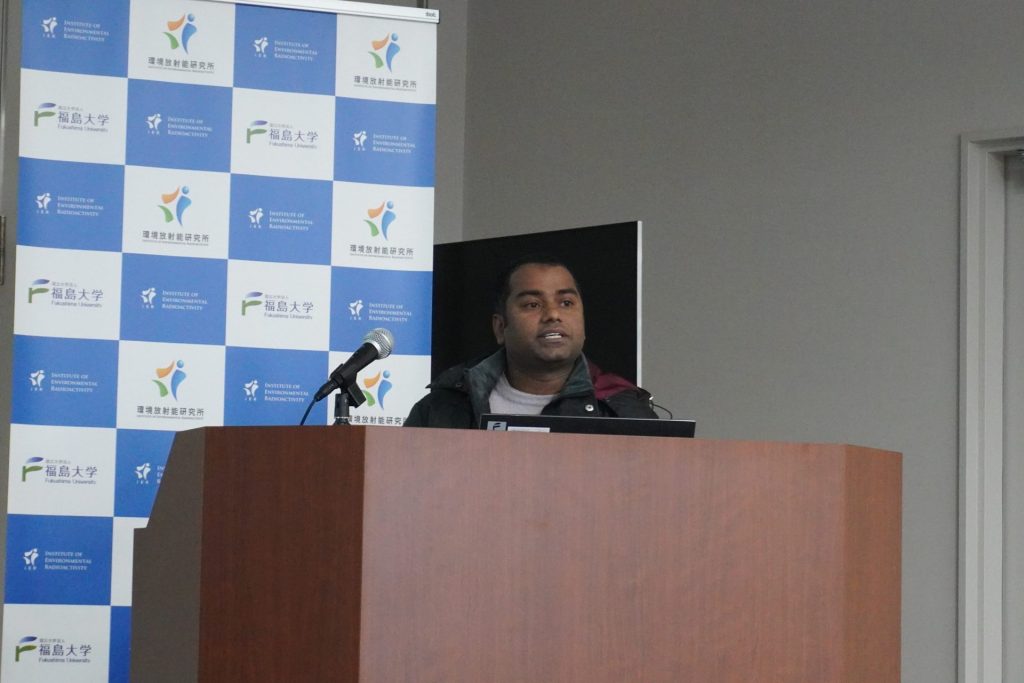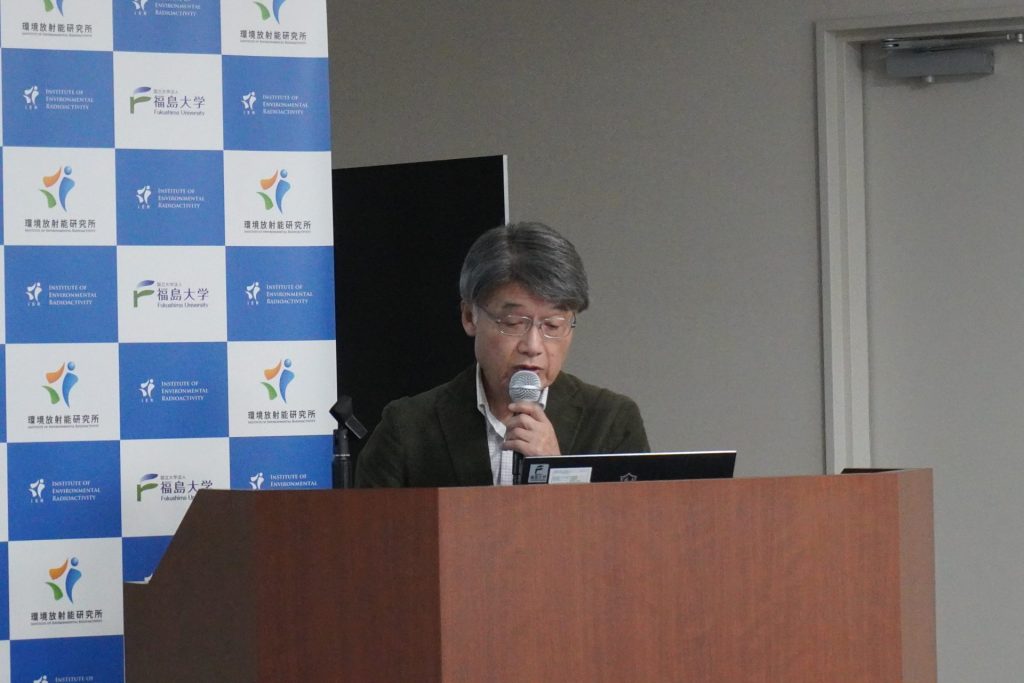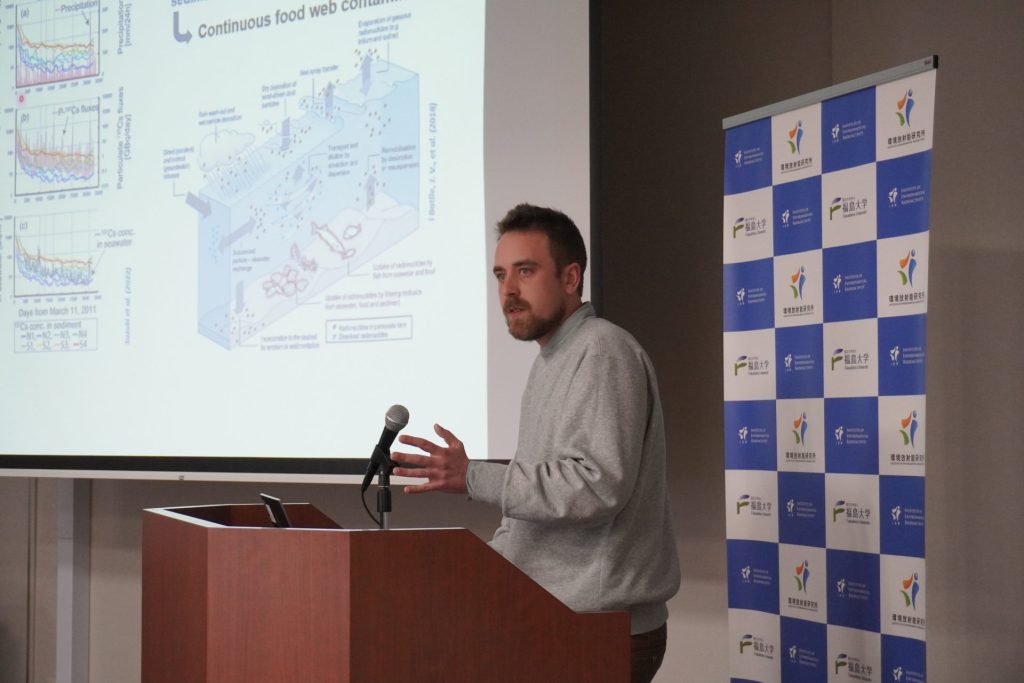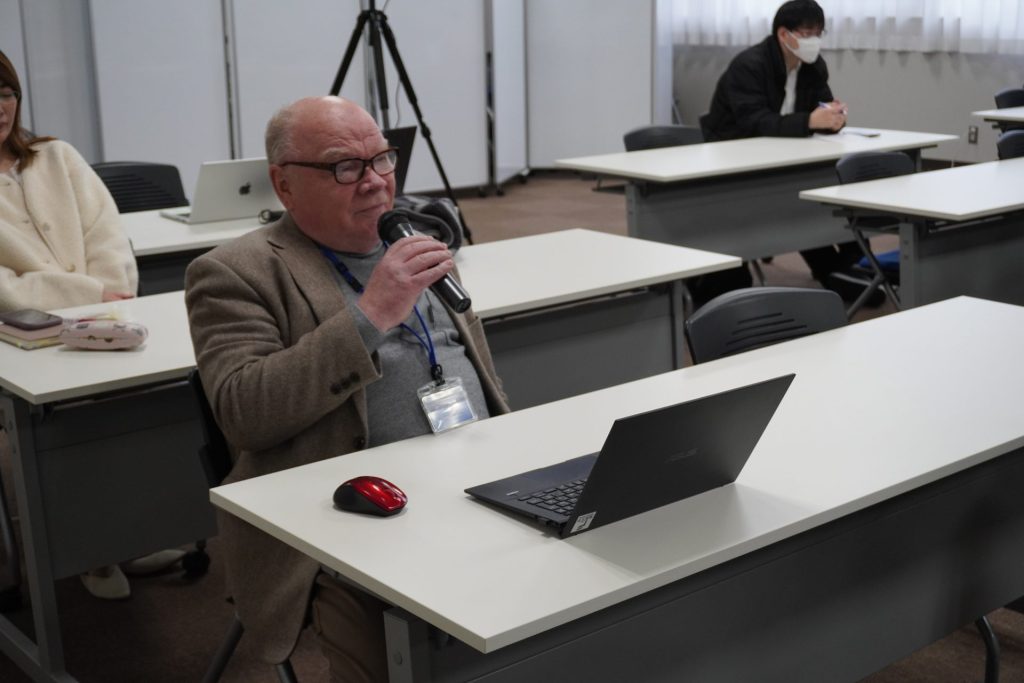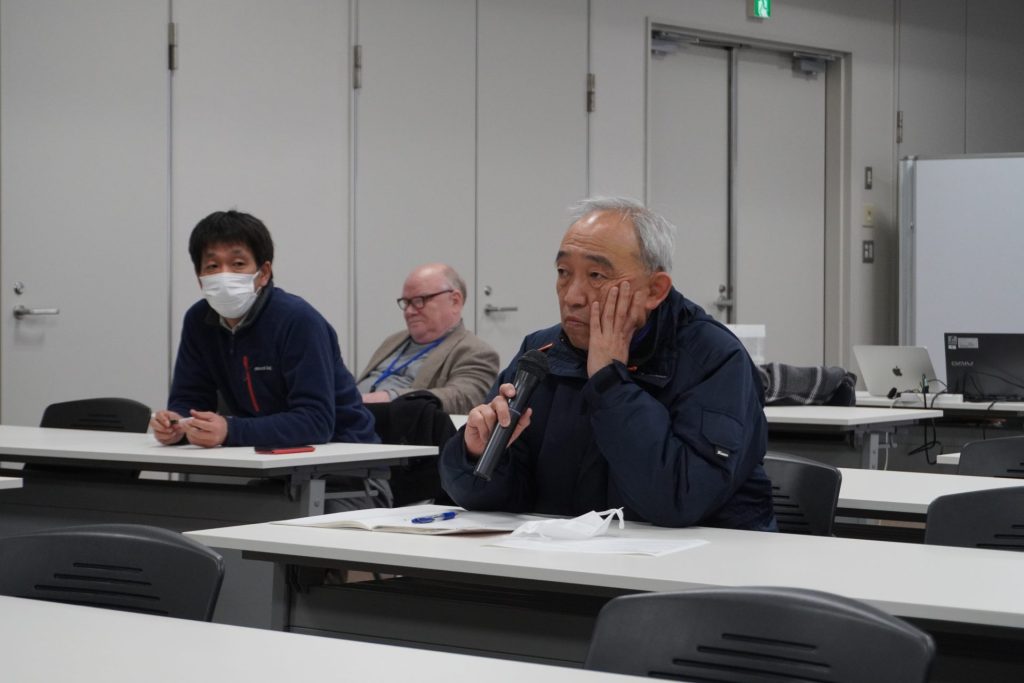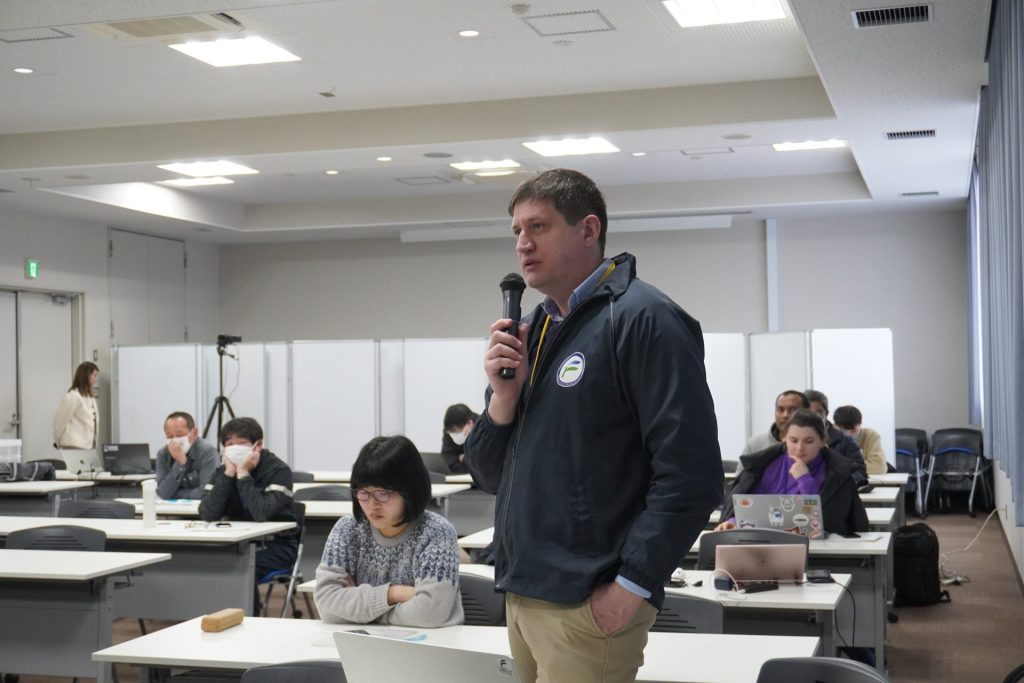March 4, 2024 12th IER seminar of FY2023 was held. <Graduate Students, International Visiting Scholar Chaboche>
| Date & Time | Mon. March 4, 2024, 13:30-15:00 JST | |||||
| Venue | 6F Conference room, Main Bldg. IER/Online (Zoom) | |||||
| Speakers | Rashedul Islam RIPON (Second year doctoral student, major in Environmental Radioactivity) SHOJI Nobutoshi (Second year master’s student, major in Environmental Radioactivity) International Visiting Scholar Pierre-Alexis CHABOCHE (Presentation order) | |||||
| Lecture Titles | ・Cesium separation from aqueous waste matrices using crown ether functionalized mesoporous silica. (RIPON) ・Influence of Fukushima Dai-ichi Nuclear Power Plant accident, explored with land transaction data on municipalities in Fukushima Prefecture (SHOJI) ・Quantifying the riverine sources of sediment and associated radiocaesium deposited off the coast of Fukushima Prefecture (CHABOCHE) | |||||
Institute of Environmental Radioactivity (IER) regularly holds the IER seminar in which the faculty members report on their research results, with the aim of facilitating their research activities and promoting communication.
In the 12th IER seminar of this fiscal year that was held on March 4, 2024, three presentations were given by a master’s student, a doctoral student majoring in Environmental Radioactivity and International Visiting Scholar Pierre-Alexis CHABOCHE to 13 participating researchers and students as follows.
Mr. Ripon, a doctoral research student from the Rahman Laboratory, gave a presentation entitled “Cesium separation from aqueous waste matrices using crown ether functionalized mesoporous silica.” Crown ethers are macrocyclic compounds that exhibit a high affinity for specific cations like cesium due to their cavity size and promising coordinating ability. When introduced into an aqueous solution containing cesium ions, the crown ether-based sorbent can selectively capture cesium ions. Mr. Ripon reported the development of a new crown ether-based sorbent and evaluated its performance in separating cesium from wastewater.
Mr. Shoji from the Wakiyama Laboratory gave a presentation on “Influence of Fukushima Dai-ichi Nuclear Power Plant accident, explored with land transaction data on municipalities in Fukushima Prefecture.” The Fukushima Dai-ichi Nuclear Power Plant accident dealt a severe blow to agricultural land, a crucial component of the region’s farming industry, which serves as a cornerstone of Fukushima Prefecture’s economy. In the 12 cities and towns where evacuation orders were issued due to the nuclear accident, planting restrictions continue, and the rate of resuming farming activities remains at a mere 10%. Mr. Shoji focuses on the agricultural land affected by the nuclear accident, hypothesizing that the effects of the accident would be reflected in the utilization of farmland and the transaction of farmland, which in turn would be reflected in changes in farmers’ efforts in farming. Mr. Shoji continues his research to verify this hypothesis.
Dr. Chaboche presented his ongoing fellowship work with the JSPS. His research focuses on marine sediment cores collected from three river mouths in Fukushima Prefecture. Furthermore, he aims to develop an original fingerprinting approach. Previous studies have revealed that the distribution and depth of cesium-137 in the sediment cores is heterogeneous. Moreover, research utilizing geochemical analysis (ED-XRF), continuous X-Ray tomography, and particle size analyses have identified extreme events such as typhoons contributing factors to cesium deposition in river mouth areas. Dr. Chaboche concluded by discussing ongoing research, including the identification of organic matter in sediment cores and analysis of sediment using XRF core scanners, as well as projects aiming to quantify the impact of decontamination efforts on sediments in the river mouth areas and cesium-137 transition from land to sea.
After each presentation, various questions and comments were raised by IER faculty members.
